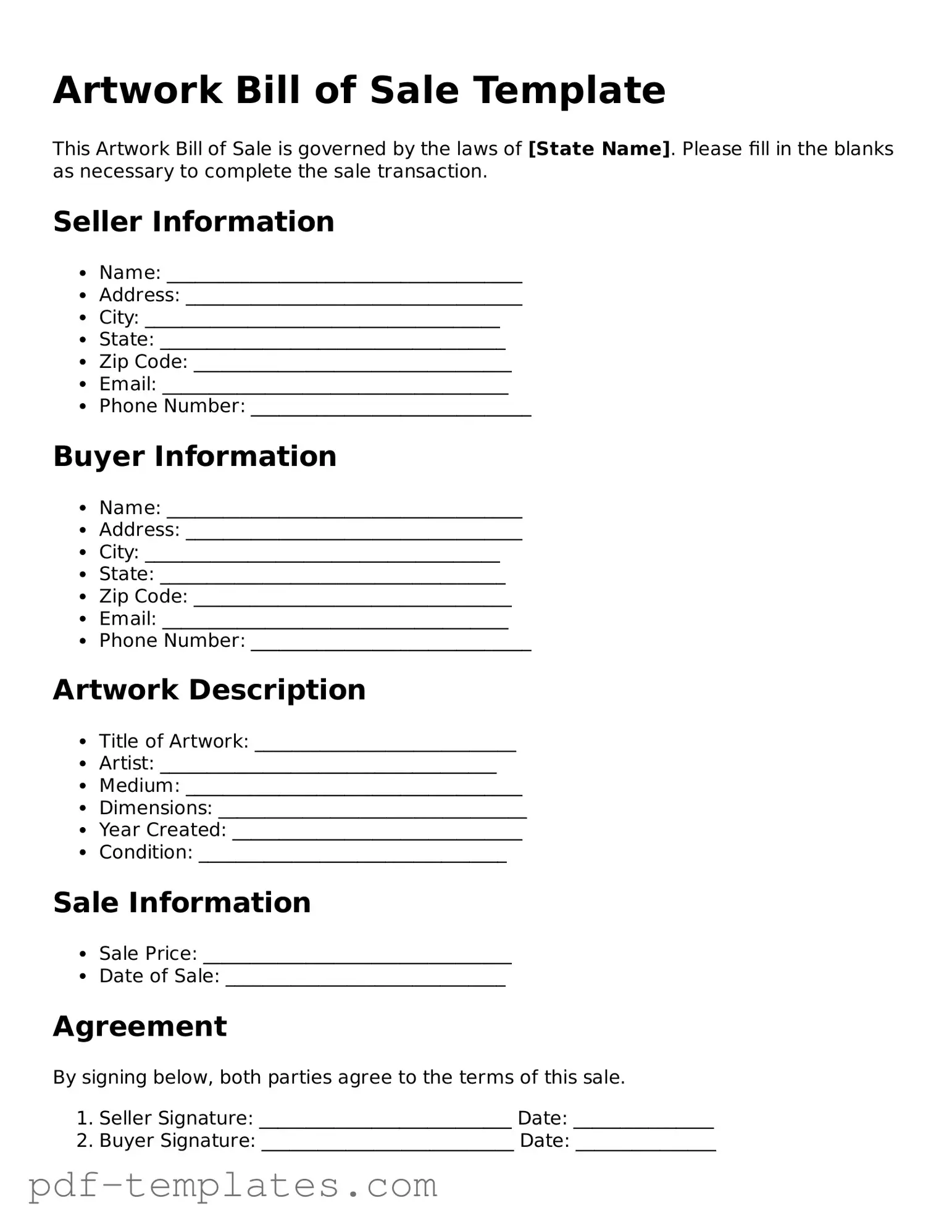The Artwork Bill of Sale form shares similarities with a Vehicle Bill of Sale. Both documents serve as proof of transfer of ownership from one party to another. In the case of a vehicle, the bill of sale includes details such as the make, model, year, and Vehicle Identification Number (VIN). Similarly, the Artwork Bill of Sale specifies information about the artwork, including the title, artist, and any identifying features. Both forms protect the buyer by providing a written record of the transaction and clarifying the terms under which the sale occurs.
In addition to the various documents discussed, it’s important to consider how the purchase or sale of vehicles, including ATVs, is handled through proper documentation. The Connecticut ATV Bill of Sale form plays a critical role in ensuring that the transfer of ownership is conducted smoothly and legally. For those engaging in such transactions, utilizing a formal document similar to the Motor Vehicle Bill of Sale is essential for clarity and protection of both parties involved.
Another document akin to the Artwork Bill of Sale is the Real Estate Purchase Agreement. This agreement outlines the terms of sale for a property, including the purchase price, closing date, and contingencies. Like the Artwork Bill of Sale, it requires signatures from both the buyer and seller, indicating mutual consent to the transaction. Both documents also serve to protect the interests of both parties, ensuring that the buyer receives clear title to the property or artwork and that the seller receives payment as agreed.
The Equipment Bill of Sale is also comparable to the Artwork Bill of Sale. This document is used when transferring ownership of equipment, such as machinery or tools. It includes details about the equipment, such as its condition and any warranties. Much like the Artwork Bill of Sale, it formalizes the transaction and provides legal protection for both the buyer and seller. Each document ensures that the buyer knows exactly what they are purchasing and that the seller has a record of the sale.
A further similar document is the Business Asset Purchase Agreement. This agreement is utilized when a business is sold, encompassing various assets, including inventory, equipment, and sometimes intellectual property. The similarities with the Artwork Bill of Sale lie in the specificity of the assets being sold and the necessity for both parties to agree on the terms. Both documents aim to clarify what is included in the sale and protect the rights of both parties involved in the transaction.
The Lease Agreement can also be likened to the Artwork Bill of Sale, though it pertains to the temporary transfer of use rather than ownership. This document outlines the terms under which one party can use another party's property, whether it be real estate, vehicles, or artwork. Both documents require clear terms regarding duration, payment, and responsibilities, ensuring that both parties understand their rights and obligations. While a lease does not transfer ownership, it does establish a legal relationship similar to that of a sale.
Lastly, the Intellectual Property Assignment Agreement bears resemblance to the Artwork Bill of Sale. This document is used when transferring rights to intellectual property, such as patents, trademarks, or copyrights. In the context of artwork, an artist may assign their copyright to a buyer. Both documents require detailed descriptions of what is being transferred and serve to protect the interests of the parties involved. They ensure that ownership rights are clearly defined and legally recognized, providing peace of mind to both the buyer and the seller.
